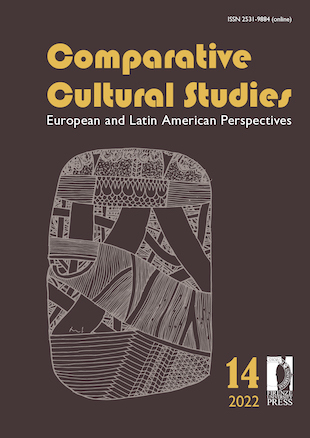Jornada cultural “La Piedra de las Mercedes”, propuesta descolonizadora de las culturas populares de ascendencia africana
DOI:
https://doi.org/10.36253/ccselap-13467Keywords:
living cultural heritage (intangible heritage), decolonization, globalization, slavery, traditionAbstract
Notions referring to cultural decolonization promote a new view at traditional popular culture or living cultural heritage, elements that constitute forms of resistance to the hegemonic culture of western basement. The study from the history-culture relationship, has led to a legitimation the values engendered in the dependency by subaltern human groups in the Melena del Sur municipality, specifically in the popular La Manchurria neighborhood. One of the contributions of the Piedra de las Mercedes (Mercy Stone) sociocultural project, which began in this neighborhood in 2008, as the cultural day of the same denomination, a decolonizing space for traditional popular cultures of African descent. The exchange between popular and academic knowledge from the animation and sociocultural promotion have legitimized the values generated since the colonial imposition.
Downloads
References
Álvarez, R. y Guzmán, M. (2011). Cuba en el Caribe y el Caribe en Cuba. La Habana, Cuba: Ed. Fundación Fernando Ortiz.
Barnet, M. (2005). La ruta del esclavo: africanía y oralidad. Oralidad, Para el Rescate de la Tradición Oral de América Latina y el Caribe, Las raíces Africanas, Anuario (13), pp. 9-11. ________ (2011). La Fuente Viva. La Habana, Cuba: Ed. Abril.
Cabrera, L. (1948). Porqué... Cuentos negros de Cuba. La Habana, Cuba: Ediciones. C.R..
Cornide, M. Teresa (2003). De La Habana, de siglos y de familias. La Habana, Cuba: Ed. Ciencias Sociales.
Eltis, D., Stephenb, B., Richardson, D. y Klein, H. The Atlantic Slaver Trade 1527-1867: A Database. Recuperado de http://www.slavevoyages.org
Enríquez, Y. (2014). Piedra para Obbatalá. Mayabeque, Cuba: Ed. Montecallado.
Guanche, J. (2004). ¿El patrimonio de la cultura popular tradicional es realmente inmate-rial o intangible?. Catauro, 5, pp. 99-107._________ (2008). Africanía y etnicidad en Cuba. La Habana, Cuba: Ed. Ciencias Sociales._________ (2011). El patrimonio cultural vivo y otros temas de antropología. La Habana, Cuba: Ediciones Adagio.
Herrera, K. (2015). Descolonización e interculturalidad. Debates y propuestas para la cons-trucción del estado plurinacional. Recuperado de http://www.google.com/search?=-descolinacion+interculturalidad
Menéndez, L. (2017). Para amanecer mañana, hay que dormir esta noche Universos reli-giosos cubanos de antecedente africano: procesos, situaciones problémicas, expresiones artísticas. La Habana, Cuba: Editorial UH.
Ortiz, F. (1975). Los negros esclavos. La Habana, Cuba: Ed. Ciencias Sociales. _______ (1965). La africanía de la música folclórica de Cuba. La Habana, Cuba: Editorial Universitaria.
Perera, A. y Meriño, M. de los Ángeles (2013). El cabildo carabalí viví de Santiago de Cuba: familia, cultura y sociedad (1797-1909). Santiago de Cuba: Ed. Oriente.
Pina, C. (1985). Lo popular: notas sobre la identidad cultural de las clases subalterna. Recu-perado de https://www.aacademica.org/i.congreso.chileno.de.antropologia/4
Revista Económica La Propaganda Literaria (1878). II (37): 14, La Habana.Rodríguez, J. (2003) Patrimonio cultural intangible. Recuperado de www.crespial.org,2004UNESCO (2003). Convención para la salvaguardia del patrimonio cultural inmaterial. Paris.
Downloads
Published
How to Cite
Issue
Section
License
Copyright (c) 2022 Yoel Enríquez Rodríguez

This work is licensed under a Creative Commons Attribution 4.0 International License.
This licence allows third parties to share (copy and redistribute the material in any medium or format) and adapt (remix, transform and create from the material for any purpose, including commercial purposes), provided that authorship and first publication in this journal (The Journal, DOI of the work) is acknowledged, a link to the licence is provided, and it is stated whether changes have been made to the work.







